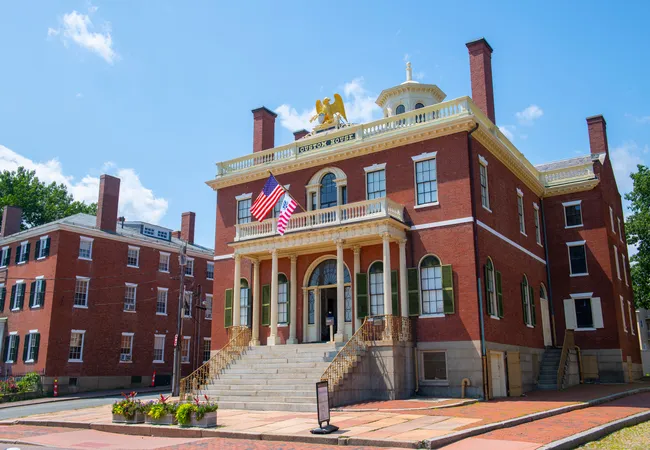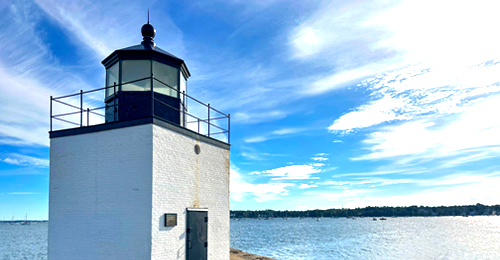
The Custom House — A Historic Salem Story

[Transcript]
The Historic Custom House
Are you facing the old Custom House? You should see a wide staircase and a columned entrance. This building dates back to 1819 and once housed offices for the U.S. Custom Service collectors and other officials. Ship captains would come here to pay their duties on the goods they imported.
That money went to support and run the federal government. If the front doors are open, you can climb the steps and walk around inside on both floors. National Park rangers are often around to greet you at the door.
Otherwise, take a seat on the front steps if you don't feel like standing. Just, you know, don't block the entry.
Hawthorne’s Time and Inspiration
Now, let's get back to our friend, author Nathaniel Hawthorne.
In 1846, he was not yet a writer who had topped the charts, so to speak. So when he received an appointment as the Port of Salem's surveyor, he took the job. You can see his office on the first floor to the left as you enter.
He had a view of the harbor while he served here from 1846 to 1849. Hawthorne's time in that office inspired the beginning of his book, The Scarlet Letter. The novel begins with an essay detailing how Hawthorne came upon a mysterious manuscript.
The essay goes something like this. One day, when there wasn't much business going on and Hawthorne was bored, he wandered upstairs and noticed a box full of discarded items. Rifling through them, he came across a piece of scarlet fabric that looked to be in the shape of a red letter A. He was immediately intrigued and then noticed there were some papers wrapped up inside it.
That's how he learned the basic facts surrounding a woman who had lived in shame in Puritan Boston. Well, Hawthorne's imagination wouldn't let this discovery go. He'd pace the Custom House day after day, compelled to bring this story to life.
By the time Hawthorne lost his job at the Custom House, he had already formulated a story, and thus The Scarlet Letter was born. It's an intriguing tale and a believable one. However, this essay at the beginning of the novel is a literary device known as a frame narrative, where one story introduces another story.
It was a popular technique in 19th century literature, and the frame story in this case was mostly fictional. In real life, Hawthorne never found anything with the big letter A, but he really did work here and he really did dislike the job. And upon writing and publishing The Scarlet Letter, he finally got himself that bestseller.
Beyond the Custom House
On another note, if you find yourself with extra time once our tour ends, there's more to explore in the area behind the Custom House. To get there, use the same red brick walkway that I pointed out before, that led to the Derby House backyard. At the far end of the pathway, you'll see the Narbonne House, a home which dates all the way back to 1675.
That means it was around during the Salem Witch Trials. We actually walked by it earlier on Essex Street. But for now, let's wrap up the tour by exploring the waterfront.
I'll tell you about the wharf while you walk down to the lighthouse and save my favorite story for the walk back. So, facing away from the Custom House, you'll be looking at the lawn and waterfront of the Salem Maritime National Historic Site. Cross the street in front of the Custom House to get there and look for the large black anchor that holds the iconic National Park sign.
Again, cross Derby Street and you'll notice that black anchor to your left. Then, press play on map marker number 15 titled Walk to Derby Wharf's Lighthouse.


























 to fuel your ride
to fuel your ride 
